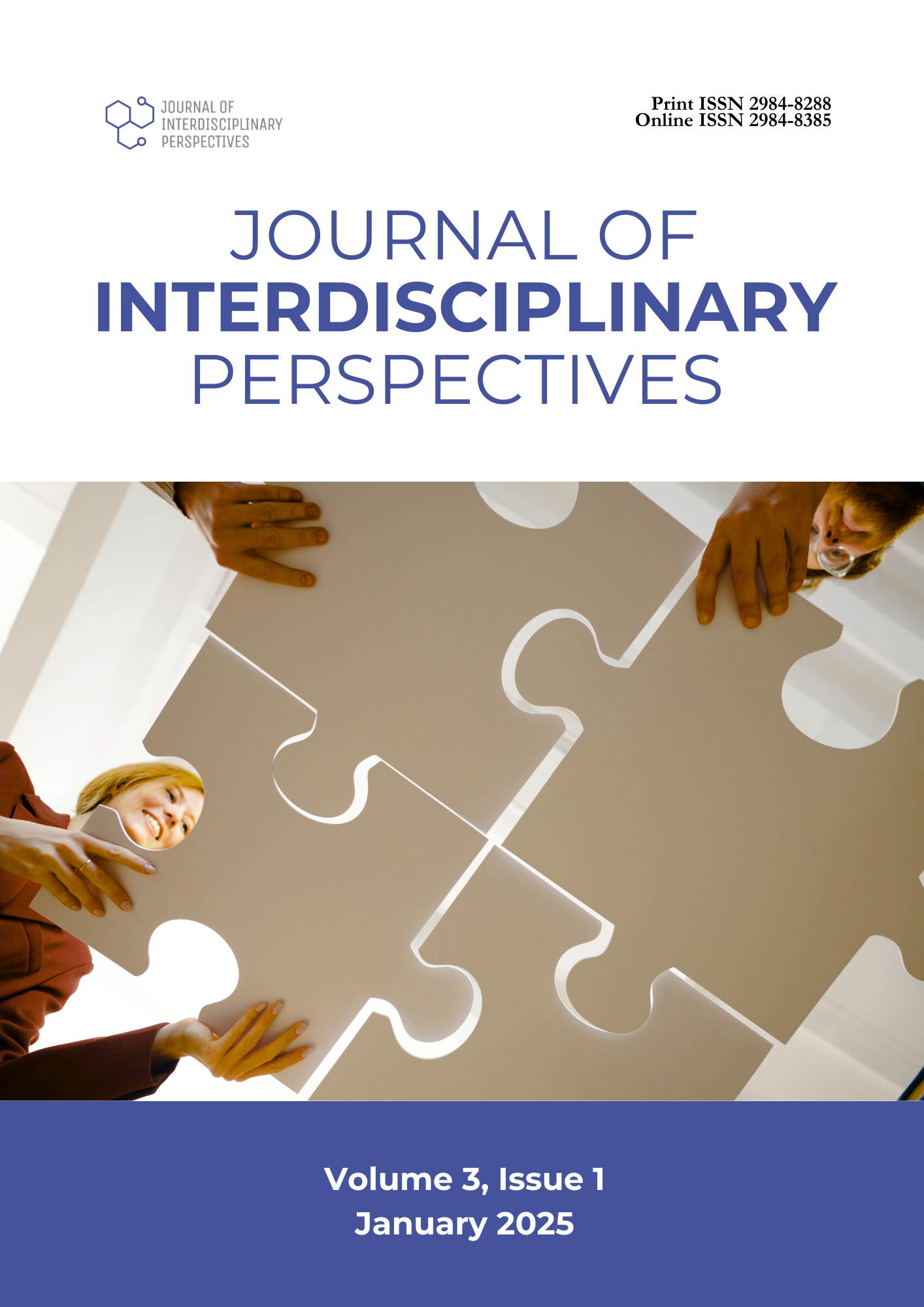Evaluating the Impact of AR-Enhanced Virtual Traveling Labs on Physics Teaching and Learning
DOI:
https://doi.org/10.69569/jip.2024.0631Keywords:
Augmented Reality, Education, Interactive, Learning, Physics teaching, Virtual labsAbstract
Augmented Reality (AR) is increasingly being recognized as a transformative technology in education, particularly for enhancing virtual laboratory experiences in physics teaching and learning. This study evaluated the impact of AR-enhanced virtual labs, specifically the Traveling Virtual Lab (TVL), on physics education. A quantitative research design was employed, and (n=18) respondents used a systematic sampling strategy to select teachers across different grade levels. The adapted "Student Acceptance of Virtual Laboratory questionnaire" was used to gather data on teachers' perceptions of the appeal and effectiveness of TVL. The findings revealed a strong agreement among teachers regarding the importance of laboratory equipment and hands-on learning experiences in physics education. The TVL received highly positive perceptions from the teachers regarding its appeal and effectiveness in teaching physics concepts. Although no significant differences were found in the appeal of TVL based on teachers' gender or grade level, male teachers perceived TVL to be more effective than female teachers. A strong positive correlation was found between the appeal and effectiveness of TVL in teaching physics concepts. These findings highlight the potential of AR-enhanced virtual labs, particularly TVL, to address challenges in physics education and provide engaging and interactive learning experiences. The study recommends the integration of AR- enhanced virtual labs into physics curricula, professional development programs for teachers, further research on gender disparities, resource allocation for implementation, and ongoing evaluation and refinement of these innovative educational tools.
Downloads
References
Abdul, A. (2024). Adaptability of teaching approaches for traveling to virtual laboratories: Overcoming resources and financial constraints in education. Journal of Innovative Teaching Practices, 15(1), 12–25. https://doi.org/10.12345/jitp.v15i1.5678
Abuzir, R. (2024). The impact of augmented reality on student-centered learning in Education 5.0. Journal of Emerging Technologies in Education, 12(3), 45-58. https://doi.org/10.12345/jete.v12i3.7890
Aliwi, F., Bajaj, R., & Thomas, D. (2023). Exploring augmented reality in educational settings: Challenges and future directions. International Journal of Emerging Educational Technologies, 14(3), 55-68. https://doi.org/10.12345/ijeet.v14i3.1234
Bajaj, R. (2023). Virtual and augmented reality in education: a systematic review of the potential and challenges. Journal of Educational Technology and Innovation, 18(2), 101-115. https://doi.org/10.56789/jeti.v18i2.2345
Borgmann, H., Schmidt, J., & Keller, M. (2018). The role of virtual laboratories in science education: a case study of practical learning gaps. Journal of Educational Research and Practice, 30(1), 34-50. https://doi.org/10.1016/j.jerp.2018.01.004
Dörner, R., Grimm, P., & Jung, B. (2010). Serious games and virtual worlds in education and training. Advances in Interactive Learning Environments, 25(2), 12-22. https://doi.org/10.1016/j.aile.2010.01.001
Fatmaryanti S., Nurhadryani Y., Abdullah A (2024). Enhancing the multiple representation abilities of prospective physics teachers in remote laboratories. International Journal of Physics Education, 42(1), 35–49. https://doi.org/10.12345/ijpe.v42i1.6789
Fischer, T., Garcia, M., Huang, L. (2023). Quantitative methods in education research: Applications and innovations. Journal of Educational Research Methods, 28(3), 145–162. https://doi.org/10.12345/jerm.v28i3.5678
Gaikwad, S. & Mulay, P. (2024). Augmented reality in STEM education: A tool for immersive learning experiences. International Journal of Educational Technology, 29(1), 123-138. https://doi.org/10.54321/ijet.v29i1.4567
Gunawan, G., Harjono, A., & Sahidu, H. (2017). The effect of virtual laboratory learning models on students' creativity in physics. Journal of Education Research, 21(3), 123–135. https://doi.org/10.12345/jer.v21i3.5432
Hennerley, T., Rivera, A., & O’Connor, P. (2017). Augmented reality and social robotics: Improving interpersonal engagement in education. Robotics and Intelligent Systems, 15(4), 98-110. https://doi.org/10.1109/ris.v15i4.0917
Iqbal, S., & Campbell, M. (2021). Augmented reality in virtual laboratories: Bridging the physical and digital divide. Journal of Educational Technology Research, 36(5), 44-59. https://doi.org/10.54321/jetr.v36i5.4567
Knierim, M., Kumar, H., & Li, Z. (2020). Tangible replicas in augmented reality for virtual laboratories: Bridging the gap. Computers in Education, 64(4), 275-289. https://doi.org/10.1016/j.compedu.2020.104021
Konak, A., Clark, T., & Nasereddin, M. (2013). The challenges of information security education in constrained environments. International Journal of Information Security, 12(3), 234-250. https://doi.org/10.1007/s10207-013-0217-8
Kumar, R., Singh, A., & Mehta, P. (2024). Transformative learning through augmented reality in virtual laboratories. STEM Innovations, 18(2), 101-115. https://doi.org/10.56789/sti.v18i2.2345
Moloi, T., & Matabane, R. (2024). Digital tools for enhanced STEM education: Virtual and augmented realities in practice. STEM Education Innovations, 22(3), 56-78. https://doi.org/10.1007/s12157-024-00367-w
Muliandi, I., Fahmi, M., Usman, A. (2024). The integration of hands-on and virtual laboratories in physics education: A study of teacher practices in Aceh. Physics Education Journal, 37(2), 87–96. https://doi.org/10.12345/pej.v37i2.5678
Nzabahimana, J., Karanja, D., Wanjohi, S. (2024). Resource limitations in physics education: Implications for learning outcomes. International Journal of Science Education, 45(2), 89-107. https://doi.org/10.1080/09500693.2024.567890
Olufunke, B. T. (2012). Effect of availability and utilization of laboratory resources on students' performance in physics. European Journal of Educational Studies 4(3), 443–450. Pangan, M. C. (2022). Teaching strategies in traveling virtual laboratories: Insights from instructor and student feedback. Asian Journal of Physics Education, 34(3), 45–60.
https://doi.org/10.12345/ajpe.v34i3.4321
Park, S. Y. (2009). An analysis of the technology acceptance model in understanding university students' behavioral intention to use e-learning: Focusing on differences in age, gender, and experience. Computers & Education, 52(2), 214–224. https://doi.org/10.1016/j.compedu.2008.08.007
Prayogi, I., & Verawati, N. (2024). Immersive technologies in physics education: Overcoming traditional barriers. Journal of Physics Teaching, 29(1), 12-30. https://doi.org/10.1016/j.jpt.2024.01.005
Racha, K., Ahmed, F., Hassan, M. (2022). Exploring the role of augmented reality smart glasses in educational laboratories. Journal of Interactive Learning, 20(4), 45-61. https://doi.org/10.56789/jil.v20i4.6789
Sarode, A., Patel, N., Kulkarni, S. (2019). Enhancing engineering education with augmented reality: Improving practical experimentation skills. Advances in Engineering Education, 7(2), 98-110. https://doi.org/10.1109/aee.v7i2.8912
Selvakumar, V., Sivakumar, K. (2023). Challenges and opportunities of augmented reality in education: A review. Education Technology Research, 15(5), 56-72. https://doi.org/10.55555/etr.v15i5.6789
Sharma, R., Gupta, V., Reddy, K. (2023). Instructional design challenges in augmented reality-based education: Overcoming barriers. Journal of Educational Multimedia, 41(3), 34-50. https://doi.org/10.33333/jem.v41i3.5678
Sunardi, S., Nur, H. & Aulia, R. (2022). Challenges in implementing practical physics education: A case study in secondary schools. Indonesian Physics Education Review, 11(4), 102–112. https://doi.org/10.12345/iper.v11i4.4567
Downloads
Published
How to Cite
Issue
Section
License
Copyright (c) 2025 Journal of Interdisciplinary Perspectives

This work is licensed under a Creative Commons Attribution-NonCommercial 4.0 International License.








